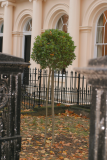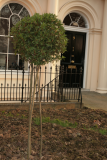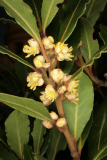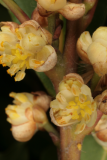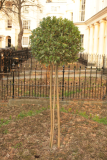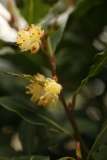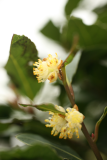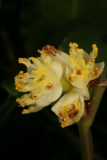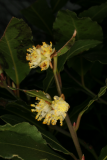Additional notes (click to expand)
Medicinal
An extract made by boiling the berries of the bay tree and flowers of dill marinated in olive oil could be rubbed on to ‘lessen weariness’. Dioscorides’ Materia Medica (circa 80 CE)
DeSwiet, Michael. (2012). Plants and the Olympic Games.
link
Culpeper: ‘Lauri. of the bay-tree. The bark of the root, drunk with wine, provokes urine, breaks the stone, opens obstructions of the liver and spleen. But according to Dioscorides is naught for women with child.
Culpeper, Nicholas. (1650). A Physical Directory . London, Peter Cole.
Dioscorides wrote ‘... the barck of the roote breakes the stone, kills ye partus [=foetus], and is good for ye liver-sick...’. The beautiful maiden, Daphne, was loved by Apollo, was changed into a laurel tree when she tried to escape from him, hence the tree became sacred to Apollo.
Gunther, R.T.. (1938). The Greek Herbal of Dioscorides ... Englished by John Goodyear.
People of Pompei today still drink a tea made from laurel leaves for abdominal complaints. Victors, in Ancient Rome, in battle or games wore a wreath of laurels; the leaves were eaten to bestow the power to prophesy, and modern cooks add them to stews (Jashemski).
Nomenclature
Laurus vulgaris in 1772
Brookes, R. (1772). The Natural History of Vegetables, vol 6. London, T. Carnan & F, Newbery.
True laurel, bay laurel, sweet bay. Laurus was the baytree, Laureola was the laurel Prunus laurocerasus in the College Pharmacopoeia
Oakeley, Dr. H. F. (2013). The Gardens of the Pharmacopoeia Londinensis.
Other use
Winners in the ancient Olympic games received a crown of bay leaves.
Jashemski, W F . (1999). A Pompeian Herbal, Ancient and Modern Medicinal Plants. University of Texas Press.
St Pauls'reference to the corruptible crown of athletes - 1 Corinthians 9:25 refers to the crown of laurel leaves. Apollo, Greek God of healing, tried to seduce a nymph called Daphne, and other Greek gods changed her into a laurel bush so she could escape his unwanted attentions. It was associated with the oracle at Delphi - the temple there was thatched with laurel. Bay trees dying were seen as a portent of ill, and in Shakespeare's Richard II the captain says ' 'tis thought the king is dead; we will not stay, the bay trees in our dountry are all withered.'
See also Old Testament, Psalms 37:35
Montague-Drake, Blair. (1977). A Biblical Herbal. Earth Images, Australia. p.30, 31
Toxicity
Contains Eugenol an alkenylbenzene. Not carcinogenic, possibly genotoxic. In vitro assays indicate genotoxicity, but less definite in vivo.
Contains methyleugenol, an alkenylbenzene. It is carcinogenic and genotoxic in mice.
van den Berg, S.J.P.L., Restani, et al., P.. (2011). Levels of Genotoxic and Carcinogenic Compounds in Plant Food Supplements and Associated Risk Assessment. Food and Nutrition Science 2: 989-1010.
link
Possibly toxic in large amounts.
Professor Anthony Dayan, 2022
Geographical distribution
- Africa, Northern Africa, Algeria
- Africa, Northern Africa, Libya
- Africa, Northern Africa, Morocco
- Africa, Northern Africa, Tunisia
- Asia-Temperate, Western Asia, Cyprus
- Asia-Temperate, Western Asia, Israel
- Asia-Temperate, Western Asia, Lebanon-Syria
- Asia-Temperate, Western Asia, Turkey
- Europe, Southeastern Europe, Albania
- Europe, Southeastern Europe, Bosnia and Herzegovina
- Europe, Southeastern Europe, Greece
- Europe, Southeastern Europe, Italy
- Europe, Southwestern Europe, France
Laurus nobilis L.
Family: LAURACEAEGenus: Laurus
Species: nobilis L.
Common names: Bay Tree
Pharmacopoeia Londinensis name: Laurus
Distribution summary: S.Europe
Habit: Tree
Hardiness: H6 - Hardy; very cold winter
Habitat: Damp sheltered woodland slopes and moist gullies
Garden status: Currently grown
Garden location: Pharmacopoeia Londinensis 1618 'Roots' (HSE 3)
Reason for growing: Medicinal, other use
